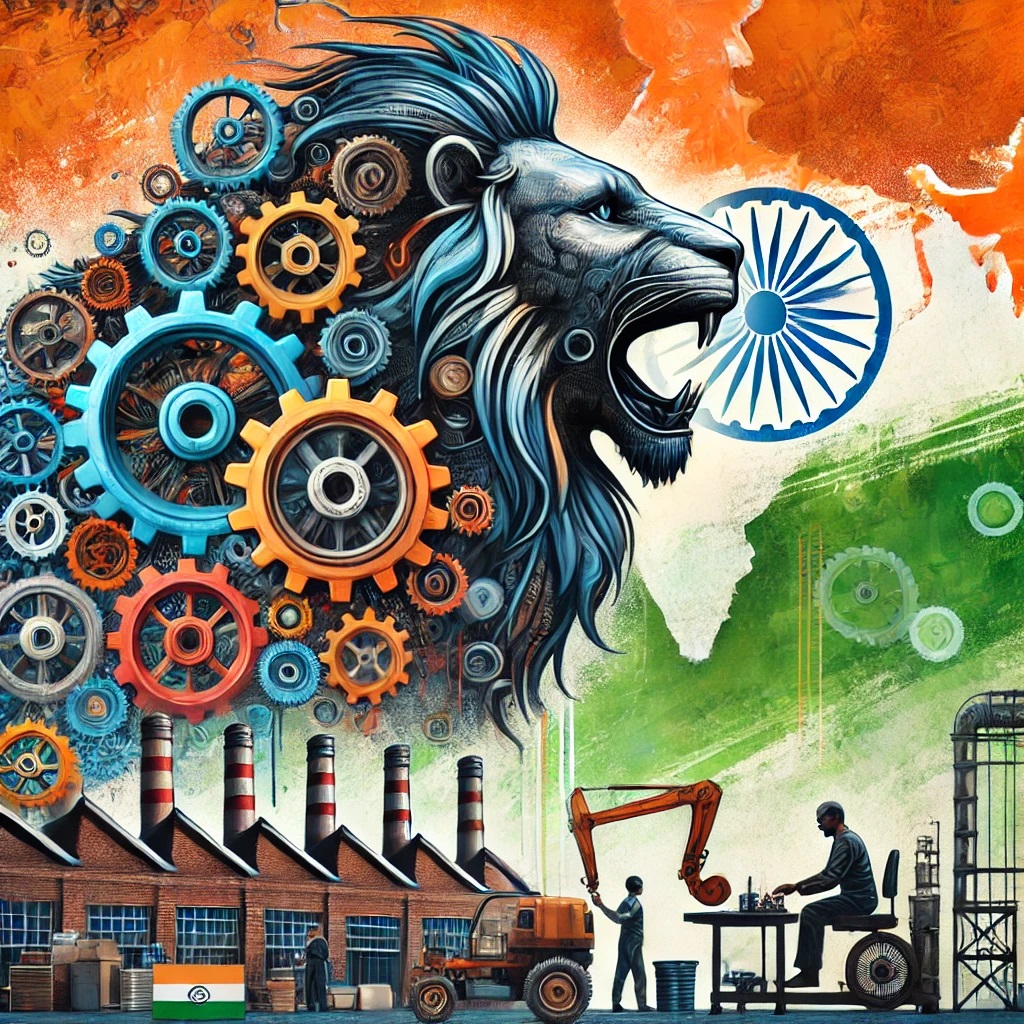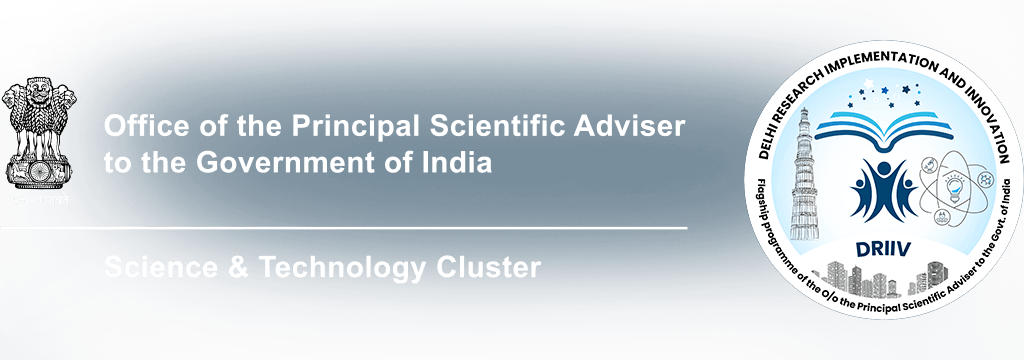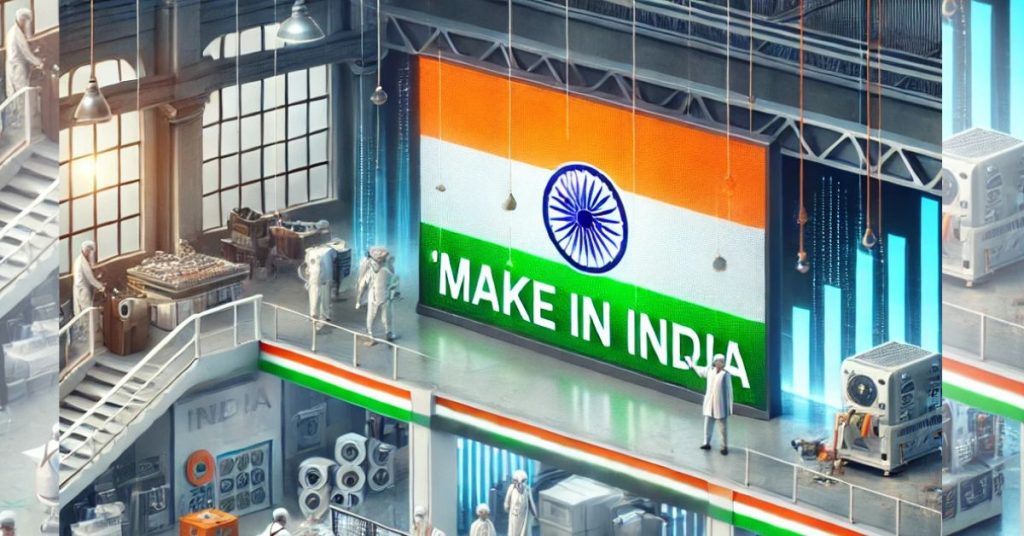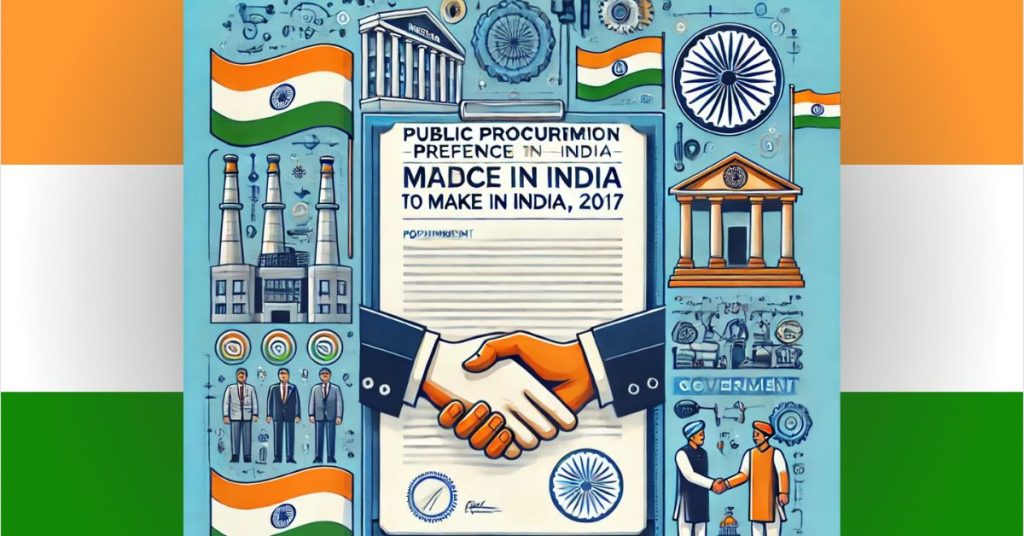Make in India is a government initiative launched to encourage companies to manufacture their products in India. It aims to strengthen the manufacturing sector, create jobs, and boost the economy. This program invites businesses from India and other countries to set up factories and industries in India instead of importing goods from other nations.
Make in India Launch Date
The Make in India program was launched on September 25, 2014, by Prime Minister Narendra Modi. The program was introduced to promote industrial growth, attract investments, and make India self-reliant in manufacturing.
Objectives of Make in India
The Make in India objectives focus on several key areas:
- Boost Export Growth – Increasing the production of goods in India can help boost exports and improve trade relations with other countries.
- Increase Manufacturing Growth – The program aims to make manufacturing a significant part of India’s GDP and boost production in different industries.
- Create Employment – By setting up factories and industries, the initiative aims to generate millions of jobs for Indian citizens.
- Attract Foreign Investments – The program encourages foreign companies to invest in Indian industries and establish manufacturing units.
- Promote Skill Development – The government supports training programs to help workers develop the skills needed for modern industries.
- Enhance Infrastructure – The initiative focuses on improving roads, electricity, and other infrastructure to support industries.
- Encourage Innovation – The program aims to promote research and innovation in different sectors.
Industries Covered Under Make in India
The Make in India initiative covers 25 key industries that are important for economic growth. Some of these industries include:
- Automobile Industry – Encouraging the production of cars, bikes, and other vehicles in India.
- Aerospace and Aviation – Manufacturing aircraft and improving the aviation sector.
- Biotechnology – Promoting medical and agricultural research.
- Construction – Boosting real estate and infrastructure development.
- Defense – Producing weapons, tanks, and defense equipment within India.
- Electronics – Encouraging the local production of mobile phones, laptops, and other gadgets.
- Food Processing – Supporting industries that process and package food.
- Information Technology (IT) and Software – Expanding India’s role as a global IT leader.
- Pharmaceuticals – Making medicines and vaccines in India instead of importing them.
- Renewable Energy – Increasing the production of solar, wind, and hydro energy.
- Textile Industry – Supporting the production of clothes, fabrics, and garments.
The government continues to expand the Make in India program to include more industries.
Benefits of Make in India
The Make in India initiative has provided several benefits to India’s economy and industries.
One of the biggest benefits is job creation. With more factories opening in India, people get more job opportunities, especially in rural areas where employment is limited.
Another major benefit is economic growth. Manufacturing contributes significantly to the GDP (Gross Domestic Product) of a country. By producing more goods within India, the economy becomes stronger.
The initiative has also attracted foreign investments. Many international companies, including Apple, Samsung, and Tesla, have started manufacturing their products in India. This not only boosts the economy but also brings advanced technology and better business practices to India.
Another advantage is improved infrastructure. The government is building better roads, railways, ports, and power supply networks to support businesses. These developments help industries grow and operate smoothly.
Additionally, exports have increased due to Make in India. India is now producing and selling more products to other countries, bringing more money into the country.
Impact of the Make in India Program

The Make in India program has had a significant impact on the country’s economy. Some of its major achievements include:
- Increase in Foreign Direct Investment (FDI) – Since its launch, India has seen a rise in foreign investments in various sectors. Several global companies have set up manufacturing plants in India.
- Growth in Domestic Manufacturing – Indian industries have expanded their production capacities, reducing dependence on imports.
- Development of Infrastructure – New industrial corridors, roads, and power plants have been built to support manufacturing.
- Rise in Employment – Millions of jobs have been created in different sectors due to new industries.
- Boost in Export of Goods – India has increased its exports of electronic goods, automobiles, and textiles.
Government Initiatives Supporting Make in India
To make the Make in India campaign more successful, the government has introduced several other programs:
- Startup India – Supports new businesses and startups with funding and guidance.
- Skill India – Provides training programs to improve workers’ skills.
- Digital India – Encourages the use of digital technology and internet services.
- Production Linked Incentive (PLI) Scheme – Offers financial benefits to companies that manufacture in India.
- National Infrastructure Pipeline (NIP) – Focuses on building better roads, ports, and power supply systems.
These programs work together to strengthen the Make in India initiative and boost economic growth.
Future of Make in India
The future of Make in India looks promising. The government is continuously working to improve policies, build better infrastructure, and make business processes easier.
With the rise of technology, industries like artificial intelligence (AI), robotics, and electric vehicles are expected to grow under the Make in India campaign. India has the potential to become a leader in these fields.
The initiative is also expected to play a key role in India’s goal of becoming a $5 trillion economy. By focusing on domestic manufacturing, increasing exports, and improving innovation, India can become a global manufacturing powerhouse.
However, to achieve long-term success, India must focus on education, skill development, environmental safety, and ease of doing business. If these challenges are addressed, Make in India can transform India into one of the largest manufacturing economies in the world.
Conclusion of Make in India
The Make in India initiative has played a vital role in transforming India’s economy. By encouraging domestic manufacturing, attracting foreign investments, and creating job opportunities, it has helped the country move towards self-reliance and economic growth.
Although challenges exist, continuous efforts from the government, industries, and citizens can help Make in India achieve its full potential. This initiative is not just about manufacturing; it is about building a stronger, self-sufficient, and developed India.
Also Read:
- 2047 Viksit Bharat Viksit Railway
- Viksit Bharat 2047 Portal
- Viksit Bharat 2047 – A Vision for a Developed India
Frequently Asked Questions
What is the Make in India?
Make in India is a government initiative to boost manufacturing in India. It encourages companies to set up industries in India, create jobs, and improve the economy. The program also aims to reduce dependence on imports and promote India as a global manufacturing hub.
How does Make in India benefit the economy?
Make in India strengthens the economy by creating employment, increasing foreign investments, reducing imports, and boosting exports. It also improves infrastructure, promotes self-reliance, and helps businesses grow, contributing to India’s goal of becoming a $5 trillion economy.
Which industries are included in Make in India?
The initiative covers 25 industries, including automobiles, aerospace, electronics, textiles, food processing, defense, renewable energy, IT, and pharmaceuticals. These industries are important for economic growth and help make India a strong global manufacturing center.
What challenges does Make in India face?
Challenges include a lack of skilled workers, complex regulations, competition from other countries, infrastructure issues, and environmental concerns. The government is working on improving education, business policies, and infrastructure to overcome these problems and make India a top manufacturing destination.
When was the Make in India launch date?
The Make in India program was launched on September 25, 2014, by Prime Minister Narendra Modi. The initiative was introduced to promote industrial growth, attract foreign investments, and create job opportunities by encouraging companies to manufacture their products in India instead of importing them.
What are the main Make in India objectives?
The Make in India objectives include increasing manufacturing, generating jobs, attracting foreign investment, improving infrastructure, supporting skill development, boosting exports, and promoting innovation. The program aims to make India self-reliant and establish it as a key player in global manufacturing.
What challenges does the Make in India scheme face?
The Make in India scheme faces challenges like high production costs, lack of skilled labor, bureaucratic delays, infrastructure issues, and global competition. Overcoming these requires better policies, skill development programs, and improved ease of doing business in India.
How does Make in India attract foreign companies?
The Make in India program attracts foreign companies by offering tax benefits, relaxed business laws, special economic zones (SEZs), and investment-friendly policies. The government also provides infrastructure support, making India a preferred destination for global manufacturing and industrial expansion.




